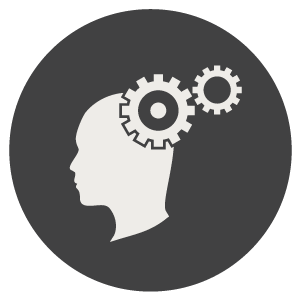How to Take A Break
Congratulations! Why am I congratulating you? Because you’re taking a break to read this blog post. Unless you are paid to read blog articles (in which case is your company/organization hiring?), you are taking a quick 10-minute break out of your busy day to read this article about breaks. #meta.
In a work culture that’s always moving at mach speed and the work-from-home situation that challenges work-life balance, taking 10 minutes to yourself is essential. But what if next time you need a break you don’t even have the full 10 minutes you dedicated to this blog? Thankfully, this 10 minutes is going to be an investment in your future to supercharge your subsequent breaks.
How do you Properly Take a Break?
I do need to qualify my previous compliment though. While I congratulated you for taking a break, reading a blog post is actually not a particularly effective break.
Overall, breaks tend to be beneficial, but not all breaks are created equal.
A study on this hypothesis looked at two important factors on the effectiveness of breaks for reducing negative emotions during the work day: the kind of break and how demanding their workday was1. Not surprisingly, breaks were overall less effective on highly demanding days compared to less demanding days.
Breaks involving activities like:
reading
surfing the web
catching up on email
online shopping
…were actually found to have the highest levels of negative emotions on highly demanding days! So this begs the question: how should you spend your next break?
Relax
Regardless of how stressful your day is, the study found that taking a moment to de-stress and distance yourself from work was an effective way to reduce negative emotions during the work day.
This can include activities like:
going for a walk
some light stretching
soaking in some scenery
taking a quick nap
All of these activities had a restorative effect, helping de-escalate the tension of the workday. If you can, try to find a way to fit some greenspace into relaxation break to supercharge their restorative effect.
A separate study found that a break as short as 40 second that involved viewing plants or natural scenery was able to help improve people’s attention2, allowing them to return to work with an extra degree of focus on their tasks.
Next time you need a break from your work, do not feel guilty about taking some R&R. It's objectively good for you and your boss will enjoy your improved productivity when you return from your break.
2. Connect with Others
Humans are social creatures and we have a wonderful hormone called oxytocin that literally mitigates the effects of stress hormones on our body3. In the same way that a little bit of greenspace can supercharge a relaxation break, so can breaks that involve connecting with other people.
A little bit of small talk with your co-workers, a phone call with your family, or even a few text messages with a friend were found in the break study to reduce negative emotions.
Not only will this form of a break be restorative for you, but it also engages another person in a restorative break and gives them the same benefits.
3. Coffee Break
The study hypothesized that taking a nutrition break and eating a snack would reduce the negative emotions from a busy day of work. They ended up being wrong about this, but found that caffeine breaks were super effective.
So you now have scientific proof to take your coffee break guilt free (unless its your second french press worth of coffee like the author at the time of writing this article).
We can supercharge this break too!
Next time you take a coffee break, spend 5 minutes just soaking in all of the sensations of the coffee. How does it taste? Describe the smell. What sounds can you hear as you slowly sip the hot beverage? This exercise is a way to bake a little meditation into your day and get even more restoration out of your coffee break.
Which break will you choose next?
Remember you deserve it and these smart breaks will basically pay for themselves with respect to productivity and fulfillment from your work.
If you want to learn more about how to strategize your breaks, check out Episode 5 of The Science of Work Podcast, “How many breaks should we take in a work day” which goes into greater depth on exactly this topic!
Consciously design your day, or someone else will.
References
Kim, S., Park, Y., & Niu, Q. (2017). Micro‐break activities at work to recover from daily work demands. Journal of Organizational Behavior, 38(1), 28-44.
Lee, K. E., Williams, K. J., Sargent, L. D., Williams, N. S., & Johnson, K. A. (2015). 40-second green roof views sustain attention: The role of micro-breaks in attention restoration. Journal of Environmental Psychology, 42, 182-189.
Smith, A. S., & Wang, Z. (2014). Hypothalamic oxytocin mediates social buffering of the stress response. Biological psychiatry, 76(4), 281-288.
Dr Lisa Belanger
Lisa has a Ph.D. in Behavioural Medicine, an Executive MBA, and is a Certified Exercise Physiologist and High Performance Specialist.
-
Build a better brain with these 5 quick tips. https://t.co/RyIn3SV286 #betterbrain #brainhealth #mind #resilience #stress
-
Download our free guide for improving your brain and building resilience at work! https://t.co/M7KlqSIgVf #stress… https://t.co/nxohZ9fYf4
-
Build a better brain with these 5 quick tips. https://t.co/RyIn3SV286 #betterbrain #brainhealth #mind #resilience #stress


















